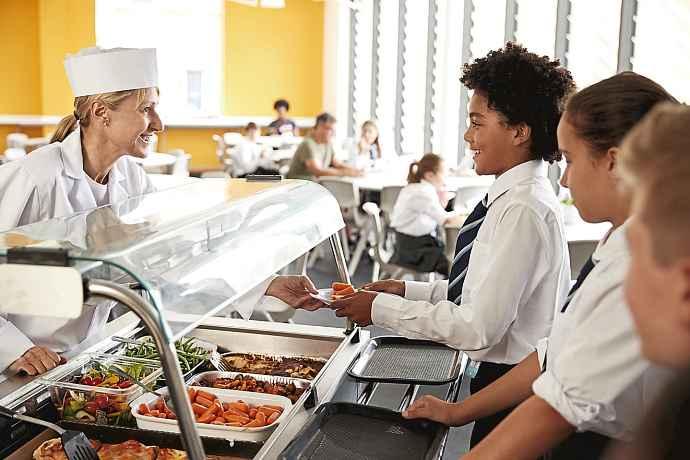
3 minute read
Eating well
EXPERTS SHARE TOP TIPS FOR A HEALTHIER LUNCH
The NHS’s Better Health campaign has provided these top tips for healthy lunches. n Keep them fuller for longer –Base the main lunchbox item on foods like bread, rice, pasta and potatoes. Choose wholegrain where you can. n Freeze for variety – Keep a small selection of different types of bread in the freezer so you have a variety of options – like bagels, pittas and wraps, granary, wholemeal and multigrain. n DIY lunches – Wraps and pots of fillings can be more exciting for kids when they get to make them. Dipping foods are also fun and a nice change from a sandwich each day. n Cut back on fat – Pick lowerfat fillings , like lean meats, fish, lower-fat spread, reduced-fat cream cheese and reduced-fat hard cheese. And try to avoid using mayonnaise in sandwiches. n Always add veg – Cherry tomatoes, or sticks of carrot, cucumber, celery and peppers all count towards their 5 A Day. Adding a small pot of reduced-fat hummus or other dips may help with getting kids to eat vegetables. n Cheesy does it… Cheese can be high in fat and salt, so choose stronger-tasting ones – and use less of it – or try reduced-fat varieties.
n Cut down on crisps – If your child really likes their crisps try reducing the number of times you include them in their lunchbox, and swap for homemade plain popcorn or plain rice cakes instead.
n Add bite-sized fruit – Try chopped apple, peeled satsuma segments, strawberries, blueberries, halved grapes or melon slices to make it easier for them to eat. Add a squeeze of lemon juice to stop it from going brown.
Fuel studies with a decent meal
Your child will need a good meal in the middle of the day to help them process all the new things they are learning.
And the choice is either they take in packed lunch from home or they choose a hot dinner in the school canteen. Both have their pros and cons.
Sending your son and daughter to school every day with a full lunch box gives you control of the food they eat.
But it’s another job to do each morning when time is already precious and it can be hard to keep the options interesting for your child.
School dinners mean you know your child is getting a hot meal at lunchtime, but if you are leaving them to choose from the canteen menu you can’t be sure they will select something nutritious.
For some of you the decision may be influenced by whether your child is entitled to free school meals. This is normally the case if you are in receipt of benefits such as Income Support, Child Tax Credit and Universal Credit. The local council can tell you if your child is able to get free school meals.
In recent years, schools have put a lot of effort into revamping their dinners, especially after celebrity chef Jamie Oliver highlighted the issue in 2005.
He started his Feed Me Better campaign because he was appalled by the junk food being served at many schools in England. It led to new guidelines for school dinners and the Government investing £280 million on improving menus for youngsters.
Now all schools have healthy eating policies, which are reflected in the menus on offer for pupils. They also cater for different diets and allergies as well as for different religious faiths and beliefs.
Some have cashless systems where children use a card or even their fingerprint to buy their food each day after parents have paid money into their account at the start of term. The benefits of this are that it means children do not have to carry cash on them each day. It also allows parents to monitor what their child is eating at school because they will know what has been purchased on their account.
Many parents still choose to send their children to school with a packed lunch, especially if they prefer to eat a hot meal together as a family in the evening.
There are plenty of ideas online if you’re not sure what to give your child for lunch and suggestions to shake things up if they get tired of sandwiches each day.
Some schools also offer breakfast clubs to ensure pupils start the day well and have the energy they need to make the most of their lessons.

